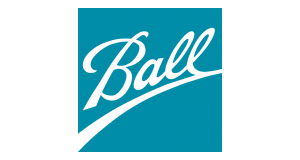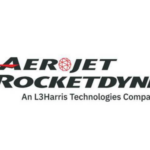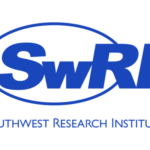Partner News
Ball Aerospace Conducts Critical Design Review for Space Force’s Next-Gen Operational Weather Satellite
Written by: Space Foundation Editorial Team

BOULDER, Colo., April 20, 2020 — Ball Aerospace conducted a critical design review (CDR) of the Weather System Follow-on (WSF) satellite mission, which it is building for the U.S. Space Force Space and Missile Systems Center (SMC). With CDR concluded, Ball Aerospace begins full production of the satellite.
Upon delivery, this next-generation operational environmental satellite system will provide critical and actionable environmental intelligence to military operations in all warfighting domains.
“Measuring and understanding the physical environment is critical to military operations, from determining tropical cyclone intensity for asset protection and maneuver operations to how wind and sea state play into assured access and aircraft carrier operations,” said Mark Healy, vice president and general manager, National Defense, Ball Aerospace. “Ball is proud to be a mission partner with the Space Force, working closely and collaboratively to ensure the success of this program, which extends Ball’s legacy of providing precise measurements from space to enable more accurate atmospheric and ocean forecasting.”
WSF is designed specifically to mitigate three high-priority Department of Defense Space-Based Environmental Monitoring (SBEM) gaps: ocean surface vector winds, tropical cyclone intensity and the space weather gap, low Earth orbit (LEO) energetic charged particles. It will also address three additional SBEM gaps: sea ice characterization, soil moisture and snow depth. As the prime contractor for WSF, Ball is responsible for delivering the entire mission, including instrument, spacecraft and system software, as well as the algorithms for data products, to SMC.
Ball has played key roles on numerous operational weather satellite programs, including the Ball-built Suomi National Polar-orbiting Partnership (Suomi NPP) satellite, which launched in 2011, and the Joint Polar Satellite System-1 (JPSS-1) satellite, now NOAA-20, which launched in 2017.
Ball Aerospace pioneers discoveries that enable their customers to perform beyond expectation and protect what matters most. We create innovative space solutions, enable more accurate weather forecasts, drive insightful observations of our planet, deliver actionable data and intelligence, and ensure those who defend our freedom go forward bravely and return home safely. For more information, visit www.ball.com/aerospace or connect with us on Facebook or Twitter.
About Ball Corporation
Ball Corporation supplies innovative, sustainable aluminum packaging solutions for beverage, personal care and household products customers, as well as aerospace and other technologies and services primarily for the U.S. government. Ball Corporation and its subsidiaries employ more than 18,300 people worldwide and reported 2019 net sales of $11.5 billion. For more information, visit www.ball.com, or connect with us on Facebook or Twitter.
Forward-Looking Statements
This release contains “forward-looking” statements concerning future events and financial performance. Words such as “expects,” “anticipates,” “estimates,” “believes,” “targets,” “likely,” “positions” and similar expressions typically identify forward-looking statements, which are generally any statements other than statements of historical fact. Such statements are based on current expectations or views of the future and are subject to risks and uncertainties, which could cause actual results or events to differ materially from those expressed or implied. You should therefore not place undue reliance upon any forward-looking statements and any such statements should be read in conjunction with, and, qualified in their entirety by, the cautionary statements referenced below. The company undertakes no obligation to publicly update or revise any forward-looking statements, whether as a result of new information, future events or otherwise. Key factors, risks and uncertainties that could cause actual outcomes and results to be different are summarized in filings with the Securities and Exchange Commission, including Exhibit 99 in our Form 10-K, which are available on our website and at www.sec.gov. Additional factors that might affect: a) our packaging segments include product capacity, supply, and demand constraints and fluctuations; availability/cost of raw materials and logistics; competitive packaging, pricing and substitution; changes in climate and weather; footprint adjustments and other manufacturing changes, including the start up of new facilities and lines; failure to achieve synergies, productivity improvements or cost reductions; mandatory deposit or other restrictive packaging laws; customer and supplier consolidation; power and supply chain interruptions, including due to virus and disease outbreaks; potential delays and tariffs related to the U.K’s departure from the EU; changes in major customer or supplier contracts or a loss of a major customer or supplier; political instability and sanctions; currency controls; changes in foreign exchange or tax rates; and tariffs, trade actions, or other governmental actions, including business restrictions and shelter-in-place orders in any country affecting goods produced by us or in our supply chain, including imported raw materials, such as those related to COVID-19 and those pursuant to Section 232 of the U.S. Trade Expansion Act of 1962 or Section 301 of Trade Act of 1974; b) our aerospace segment include funding, authorization, availability and returns of government and commercial contracts; and delays, extensions and technical uncertainties affecting segment contracts; c) the company as a whole include those listed plus: the extent to which sustainability-related opportunities arise and can be capitalized upon; changes in senior management, succession, and the ability to attract and retain skilled labor; regulatory action or issues including tax, environmental, health and workplace safety, including U.S. FDA and other actions or public concerns affecting products filled in our containers, or chemicals or substances used in raw materials or in the manufacturing process; technological developments and innovations; the ability to manage cyber threats and the success of information technology initiatives; litigation; strikes; disease; pandemic; labor cost changes; rates of return on assets of the company’s defined benefit retirement plans; pension changes; uncertainties surrounding geopolitical events and governmental policies both in the U.S. and in other countries, including policies, orders and actions related to COVID-19, the U.S. government elections, budget, sequestration and debt limit; reduced cash flow; interest rates affecting our debt; and successful or unsuccessful joint ventures, acquisitions and divestitures, and their effects on our operating results and business generally.
# # #


